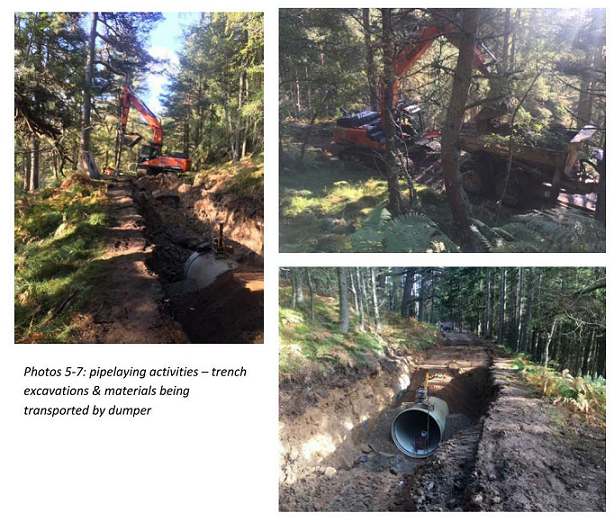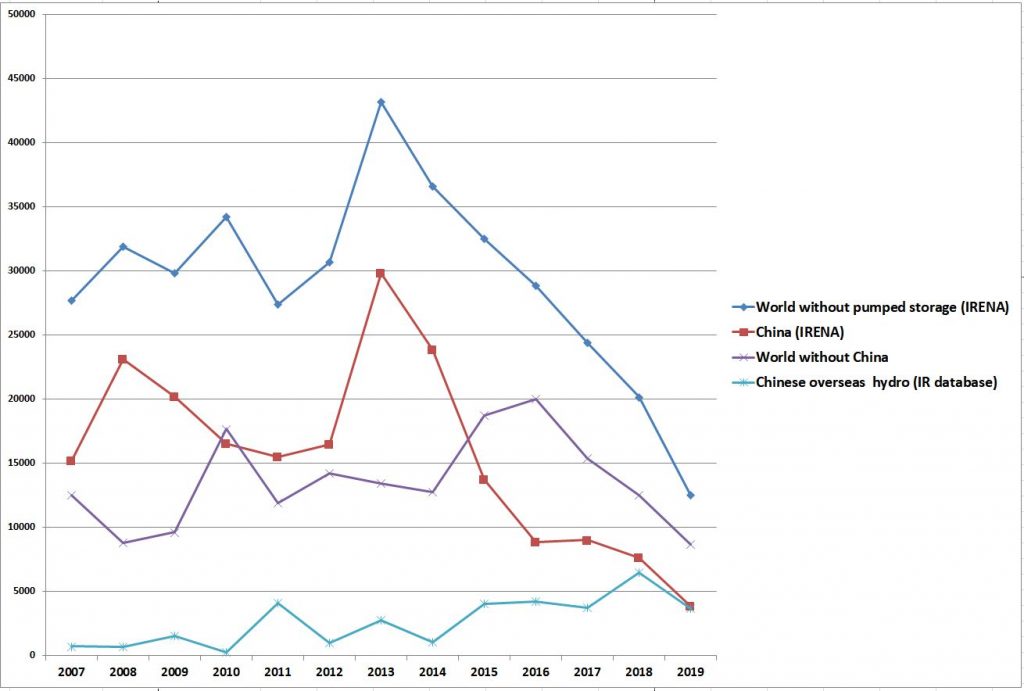
The Daily Mail reported that the Queen has won over environmentalists an argument about developing 2MW hydropower scheme on River Muick in Scotland. The new hydro which affects natural ecosystems of Cairngorms National Park will supply the Balmoral royal estate and the expected net financial value of generation goes up to 650000 pounds a year. However, the 2020 report from IRENA on development of renewable energy proves that the Queen have chosen a failing unpopular technology, while many reports from academics show that construction of renewable power stations in protected areas presents a growing threat to biodiversity, from which hydropower is responsible for the most severe impacts.

According to the IRENA’s report “Renewable Capacity Statistics 2020” the global installation of new hydropower in 2019 was under 13000MW or 40% less than in 2018. Hydropower annual installation figures have been falling for 6 years in a row and now it is only about a quarter of what were put online in 2013.
First time in the century China (3842 MW) yielded the leadership in hydropower installation to Brazil (4600MW). The champions of hydropower installation were countries which in 2019 experienced serious economic problems: besides China and Brazil, high amount of hydro was installed by Laos (718), Italy (401), Turkey (212), Iran (153), Tajikistan (120), Argentina (109), etc. This is surprisingly consistent with recent article by Sovacool and Gotz which shows that overreliance on hydropower leads to problems in countries’ development. Countries with less pronounced economic crises in 2019 opted to install solar or wind facilities at much larger scale. Last year the world put on line 98000 MW of solar and 48000MW of wind, so the share of hydropower in the full newly installed capacity of renewables shrank to 7%.
More than 70% of hydropower capacity installed in 2019 comes from highly problematic dams:
-11 GW Belo Monte Hydro in Brazilian Amazon, which killed Xingu river and displaced thousands of indigenous peoples;
-1218 Xayabury Hydro of Laos –the first dam to dissect Mekong River mainstream, necessitating extinction of most of its 200+ migratory fish species and starvation of millions of fishermen relying on those fisheries;
– Ilisu Dam in Turkish Kurdistan blocking Tigris River, exterminating ancient town of Hasankeyf, displacing 50000 Kurds and threatening the Mesopotamia Marshes World Heritage site downstream;
– 3600 MW Rogun Hydro of Tajikistan in Aral Sea Basin that once almost caused a war and will inevitably exacerbate already acute water shortages and affect agriculture in downstream areas –source of living for many million people;
– Part of 3842 MW capacity that came on line in China comes from continued destruction of Yangtze River ecosystem, where extinction of a giant Chinese paddlefish due to impacts of damming was recognized by scientists at the end of 2019.
These are newly incurred enormous costs of hydropower, which no longer is the most affordable, most widespread or most efficient source of low-carbon energy. This industry is slowly dying and rapidly taking away our best natural treasures and cultural sites.
In the view of projects above the 2MW of the Queen’s Glen Muick Hydro in the Cairngorms National Park does not look particularly impressive, but fits well as an example of very bad practice. In a recent paper a group of the Queen’s (academic) subjects from Australia and Canada identified 2,206 fully operational renewable energy facilities within the boundaries of key conservation areas, with another 922 facilities under development. Among those there are 800 hydropower plants which have already affected 530 protected areas and key biodiversity areas, while another 330 dams under development threatened 110 key conservation areas. Other research shows that impacts of hydropower on biodiversity are far more severe than those from solar or wind power plants. Our own research on impacts on World Heritage sites shows that hydropower is the champion in their destruction.
So, the monarch was, likely, ill-advised, when she decided to sustain her Balmoral estate by investing in hydropower erected in the middle of a National park, thus presenting the worst possible example of “promoting renewables” to her subjects from whatever angle you look at it.

